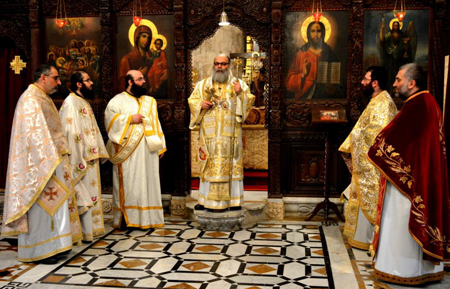The Divine Liturgy in the Monastery of Our Lady of Balamand
 His Beatitude John X celebrated the Divine Liturgy in the Monastery of Our Lady of Balamand.
His Beatitude John X celebrated the Divine Liturgy in the Monastery of Our Lady of Balamand.
In this Solemnity which gathered faithful from all the Koura and North Lebanon, His Beatitude delivered a homily in which He explained the reaction of man when dealing with God.
He mentioned that giving thanks to God Almighty is the key which guarantees the continuity of His blessings.
Many of us - said His Beatitude - receive good things from Him without giving thanks, and this is the first case.
Many others receive and give thanks, and this is the case of tenth albino according to the gospel. Others give thanks to God for everything, and this is the case of the real Christian. “Glory be to God for everything”, this was the expression of St. John Chrysostom when he was exiled, and these is what we might say always in order to receive the divine blessings.
***
The Monastery of Our Lady of Balamand is an Orthodox monastery dedicated to the Virgin Mary and Saint George. The monastery is part of the Church of Antioch and is located about eight kilometers (five miles) south of the city of Tripoli in Lebanon.
The site of the monastery was formerly a monastery founded by Cistercian monks in 1157 and was known variously as Belmont, Bellimonte ultra Mare, and Bellus-Mons.
This was the Cistercian monks' first overseas abbey, founded during the western European Crusades into the Holy Land. In the early part of the seventeenth century the monastery came under the authority of the local Orthodox Church. In recent times a theological faculty functioned within the monastery to educate new clergy until the formation, in 1971, of St. John of Damascus Institute of Theology which later became part of the University of Balamand in Tripoli.
The thirteenth century Chapter House was rebuilt after the monastery came under control of Orthodox monks in 1604. The monks found that many of its vaults had collapsed as a result of damage incurred during the battles in 1289 that ended with the fall of the Crusader County of Tripoli. During the seventeenth and nineteenth centuries the structure was converted into the Church of St. George.
Source: Patriarchate of Antioch, Orthodox wiki

